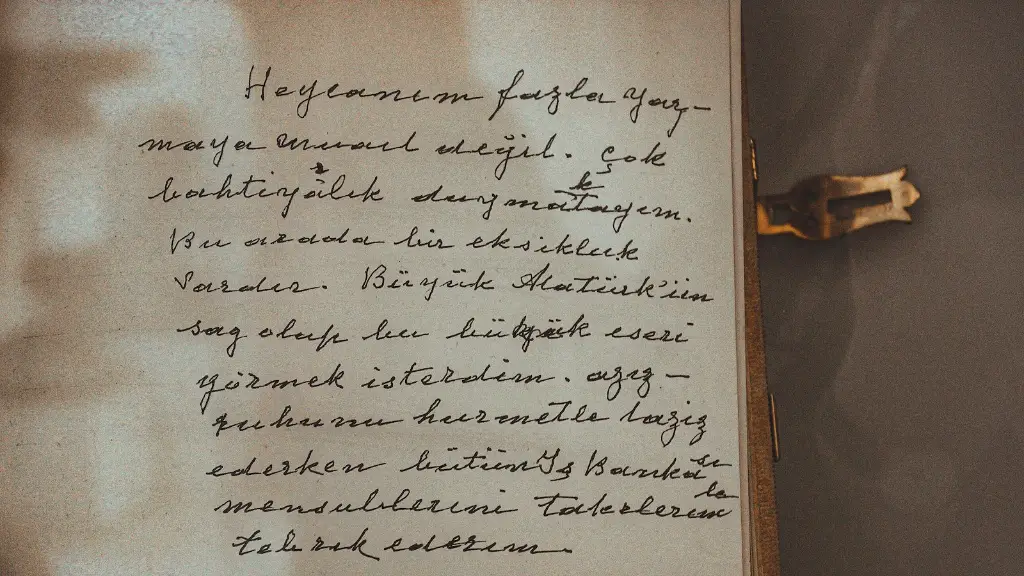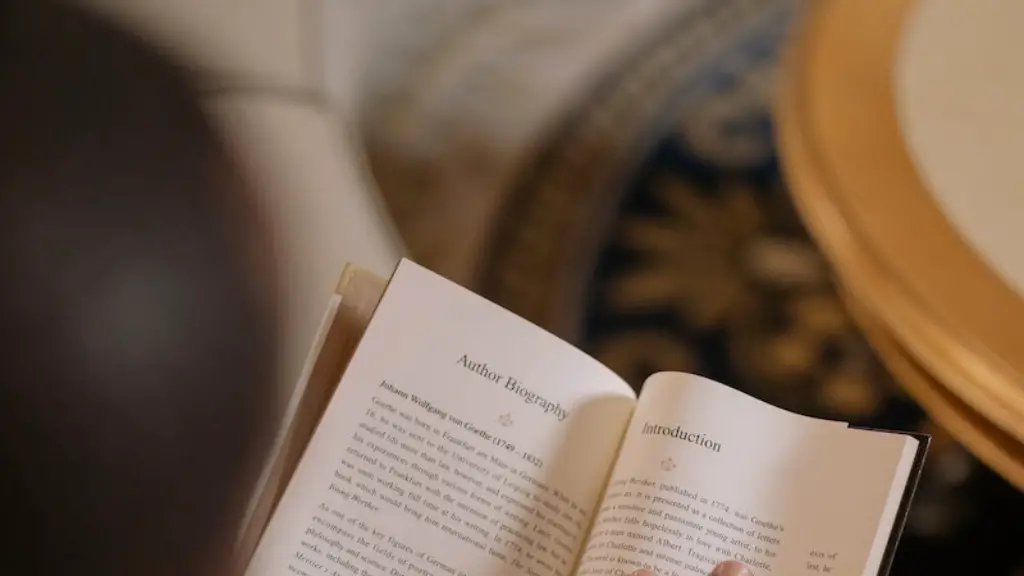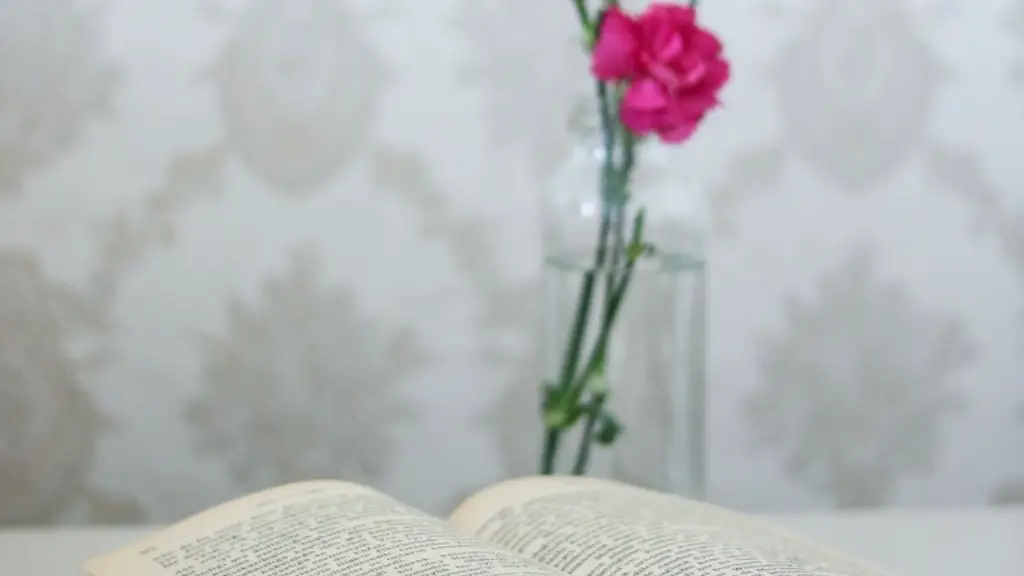Free verse is a style of poetry in which the lines are not bound by any set length or meter. This can include rhyme as well as non-rhyme forms. It gives the poet freedom to explore an idea, to tell a story, or to create patterns of words that capture an emotion. Free verse is often associated with modern poetry. It is seen as a way to express emotions that are not easily expressed in traditional poetic forms.
Despite its lack of rules, free verse still follows certain patterns. Often the poet will employ other literary devices to create emphasis and structure within the poem. For example, line breaks can be used to give the poem emphasis. Stanza breaks can also create structure, with new ideas or images being introduced in each section.
For many poets, free verse is seen as a way to break from traditional forms. It allows them to express their ideas and emotions without the restraints that come with meter and rhyme. It also allows them to make use of other literary devices, such as alliteration, metaphor, personification and imagery, to add depth and complexity to the poem.
It is important to note that free verse does not necessarily mean “unstructured” poetry. Many free verse poems follow a strict structure and form, with the poet using enjambment, caesura and end-stopped lines to create emphasis or to control the poem’s pace and flow.
Despite its lack of traditional rules and structure, free verse still requires skill and practice to master. Poets who use free verse can learn how to create powerful and moving poetry by understanding how to use literary techniques, crafting powerful images and exploring the possibilities that free verse can offer.
The importance of free verse in poetry is not to be underestimated. It is a vital part of modern poetry, allowing poets to express themselves in ways that are not possible with traditional forms.
The History of Free Verse
The earliest examples of free verse can be found in ancient Hebrew scriptures, though it was not until the Romantic period that free verse really came into its own. It was in this period that poets such as William Wordsworth and Samuel Taylor Coleridge began to experiment with free verse.
It was not until the 20th century that free verse really began to be seen as an established poetic form. It is often associated with the Imagist movement of the early 20th century, where poets such as Ezra Pound and T.S. Eliot explored the possibilities that free verse offered.
Since then, free verse has become increasingly popular. It is now used by many poets as a way to express their ideas. It is seen as an accessible and versatile form of poetry that allows poets room to explore their own creative vision.
The Benefits of Free Verse
The key benefit of free verse is that it allows the poet to express their ideas in a way that is not possible with traditional forms. Free verse gives poets a level of freedom that is not present in other poetic forms. It allows the poet to explore an idea or emotion without the restraints of rhyme, meter, or other traditional poetic conventions.
Free verse also allows the poet to use other literary devices, such as alliteration, metaphor, and imagery, to create greater depth and complexity in the poem. This can create a strong emotional impact on the reader, as the poet is able to craft powerful images and create a level of engagement that is not possible with more traditional forms.
For many poets, free verse is seen as an ideal form to express their ideas and emotions, unrestricted by the conventions of traditional poetic forms. It also provides a great opportunity for poets to learn how to use literary techniques and to create powerful imagery.
The Challenges of Free Verse
While there are many benefits to using free verse, there are also some challenges. One of the key challenges is the lack of structure, which can make it difficult for poets to craft a poem that has coherence and depth. Without structure, poets can lose focus and the poem can become disjointed.
Another challenge is the difficulty of creating emphasis without the use of traditional poetic devices such as rhyme or meter. It can be difficult to create rhythm, emphasis and structure without the tools provided by traditional poetic forms. This can make it difficult for poets to craft poems that effectively capture an emotion or idea.
These challenges can be difficult to overcome, but with practice, poets can master the art of free verse. It is important to understand the principles of free verse and to practice in order to effectively use the form.
Conclusion
Free verse is an important part of modern poetry, allowing poets the freedom to explore their creative vision and to express emotions in ways that are not possible with traditional forms. It can be both challenging and rewarding, and it requires skill and practice to master the art.
Applications of Free Verse
Free verse can be used in a variety of contexts, from creating personal reflections to writing songs or stories. It is often used to create vivid images, or to tell powerful stories. It is also often used in film and television, with poets creating poem-narratives that are both impactful and evocative.
In addition, free verse can be used to powerfully communicate social and political messages. Poets such as Langston Hughes and Claudia Rankine have used free verse to make powerful statements about racism, injustice and inequality. Free verse can be a powerful tool to share stories and make powerful statements.
The Importance of Free Verse in Poetry
Free verse is an integral part of modern poetry, providing poets with the freedom to express ideas and emotions in ways that are not possible with traditional forms. It is a valuable tool for poets to explore their creativity and to make powerful statements. As more poets take up the challenge of using free verse, its importance and popularity will continue to grow.
Techniques for Writing Free Verse
Like any form of poetry, it is important to practice and refine your craft when writing in free verse. Here are some tips and techniques for writing effective free verse poetry:
1. Explore poetic techniques such as imagery, metaphor, and alliteration – these can help to create depth and emphasis.
2. Experiment with structure and form – use line breaks, stanza breaks, and enjambment to create emphasis.
3. Be creative – use unusual words, constructions and structures to make your poem stand out.
4. Use rhythm and sound – use techniques such as assonance and consonance to create a sense of rhythm and movement.
5. Be aware of the reader – make sure your poem engages the reader and communicates your message effectively.
The Future of Free Verse
There is no doubt that free verse will continue to be an important part of modern poetry. As more poets explore the possibilities of free verse, it will continue to evolve and develop. Free verse has the potential to create powerful and engaging poems, and it will continue to be used by poets to express their ideas and emotions.





